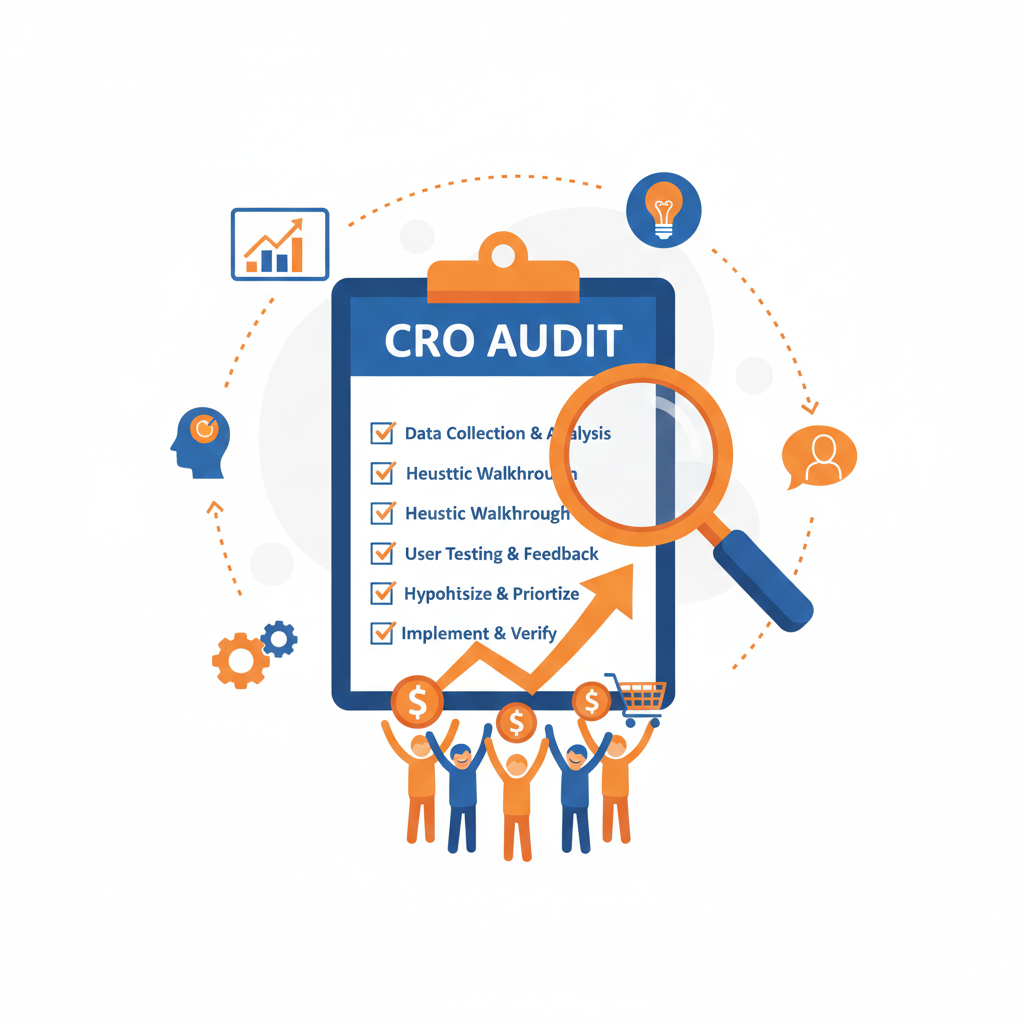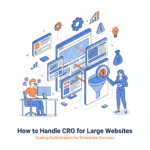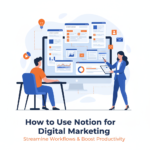
CRO Audits: How to Run a Conversion Rate Optimization Audit
1. Introduction: Why CRO Audits Are Critical
Conversion Rate Optimization (CRO) is the process of improving the percentage of website visitors who complete a desired action—whether it’s making a purchase, signing up for a newsletter, or downloading a resource.
A CRO audit is a structured evaluation of your website, landing pages, and sales funnel to identify barriers to conversion and opportunities for improvement.
Regular CRO audits help brands:
Increase revenue without increasing traffic
Identify friction points in the customer journey
Prioritize high-impact optimizations based on data
Build a roadmap for ongoing conversion improvement
2. Key Goals of a CRO Audit
A CRO audit should aim to:
Identify bottlenecks in the user journey
Analyze user behavior through data and insights
Evaluate design and copy effectiveness
Prioritize optimization opportunities
Recommend actionable strategies for testing and improvement
3. Steps to Run a CRO Audit
A comprehensive CRO audit combines quantitative data, qualitative insights, and heuristic evaluation.
Step 1: Define Conversion Goals
Before you start the audit, clarify your key conversion actions:
E-commerce: Add to cart, checkout completion
SaaS: Sign-ups, demo requests, trial activation
Lead generation: Form submissions, downloads
Set clear KPIs (e.g., conversion rate, bounce rate, average session duration) for each goal.
Step 2: Collect Quantitative Data
Use analytics tools to understand what’s happening on your site:
Google Analytics / GA4: Track conversion funnels, drop-off points, goal completions
Hotjar / Crazy Egg: Heatmaps, scroll maps, session recordings
Funnel Analytics Tools: Identify friction points in multi-step flows
A/B Testing History: Previous tests reveal which elements impact conversions
Key Metrics to Analyze:
Conversion rate (overall and per page)
Bounce rate
Exit pages
Click-through rate (CTRs) on key CTAs
Form abandonment rate
Average session duration and page load times
Step 3: Gather Qualitative Insights
Understanding why users behave a certain way is as important as quantitative data:
User Testing: Observe real users navigating your site
Surveys & Feedback Forms: Ask why they did or didn’t convert
Session Recordings: Identify friction, confusion, or frustration
Customer Support Data: Common complaints reveal barriers
These insights help uncover psychological or usability issues behind low conversions.
Step 4: Heuristic Evaluation (Expert Review)
Evaluate your website using conversion-focused best practices:
a. Landing Page Structure
Clear headlines that communicate value
Compelling subheadings
Above-the-fold clarity (user should understand the offer immediately)
b. Call-to-Action (CTA) Optimization
Visible, action-oriented, and benefit-focused CTAs
Proper placement and hierarchy
Use of color contrast to draw attention
c. Forms & Checkout
Reduce number of fields
Highlight trust signals (security badges, testimonials)
Enable autofill and mobile optimization
d. Visual Design & Layout
Consistent branding
Clean, uncluttered layout
Responsive design for mobile users
e. Content & Copy
Persuasive, clear, and scannable
Addresses user pain points and objections
Uses social proof (reviews, testimonials, case studies)
f. Technical Performance
Page speed optimization
Error-free pages and broken links
HTTPS and secure checkout
Step 5: Funnel & Journey Analysis
Map the entire user journey from landing page to conversion
Identify drop-off points and friction in multi-step funnels
Analyze whether pages align with user intent (e.g., mismatch between ad promise and landing page content)
Example: If 60% of users drop off at the checkout page, investigate shipping fees, form length, or trust signals.
Step 6: Competitor Benchmarking
Compare your site’s conversion elements with top competitors
Evaluate CTAs, page layouts, trust signals, and user flows
Identify gaps where competitors excel and adapt learnings
Step 7: Prioritize Findings
Not all optimization opportunities have the same impact. Use frameworks like ICE (Impact, Confidence, Ease) to prioritize:
Impact: How much the change can improve conversions
Confidence: Based on data, testing, or industry research
Ease: How easily it can be implemented
Focus on high-impact, low-effort changes first to generate quick wins.
Step 8: Recommendations & Action Plan
Document actionable recommendations including:
Quick wins: CTA changes, headline tweaks, form improvements
Medium-term optimizations: UX redesign, content restructuring
Long-term tests: A/B or multivariate tests for page layouts, pricing, or funnels
Each recommendation should be linked to metrics that will measure success.
4. CRO Tools for Running Audits
| Category | Tools | Purpose |
|---|---|---|
| Analytics | Google Analytics, GA4, Mixpanel | Conversion tracking, behavior analysis |
| Heatmaps & Session Recording | Hotjar, Crazy Egg, FullStory | Visualize user behavior, scroll depth, clicks |
| User Testing | UserTesting, Lookback.io | Observe real user interactions |
| A/B Testing | Optimizely, VWO, Google Optimize | Test variations and measure performance |
| Funnel Analysis | Funnelytics, Heap | Map and analyze conversion journeys |
| Feedback & Surveys | Qualaroo, Typeform, Survicate | Collect user feedback and insights |
5. Common CRO Audit Mistakes to Avoid
🚫 Focusing only on design, ignoring data
🚫 Optimizing for vanity metrics (pageviews vs conversions)
🚫 Not segmenting users (new vs returning, device types)
🚫 Ignoring mobile optimization
🚫 Implementing changes without tracking/testing
6. Reporting Your CRO Audit
A structured CRO audit report should include:
Executive Summary: Key findings and priorities
Data Analysis: Quantitative metrics and trends
Qualitative Insights: User feedback, session observations
Heuristic Evaluation: Expert review and UX issues
Recommendations: Prioritized optimization plan
Action Plan: Timeline and responsibilities
KPIs: How success will be measured post-implementation
7. Conclusion
A CRO audit is the first step toward systematic optimization. By combining data analysis, user insights, expert evaluation, and structured testing, brands can:
Increase conversion rates and revenue
Reduce friction in the user journey
Prioritize high-impact improvements efficiently
Build a culture of continuous optimization
Remember: CRO is ongoing, not one-off. Regular audits help you adapt to changing user behavior, market trends, and competitive landscapes.
Author



